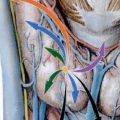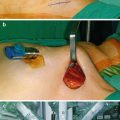John C. Watkinson and David M. Scott-Coombes (eds.)Tips and Tricks in Endocrine Surgery201410.1007/978-1-4471-2146-6_39
© Springer-Verlag London 2014
39. Diagnostic Work-Up and Nonsurgical Management of Pituitary Disease
(1)
ENT Department, University Hospital Birmingham, Birmingham, West Midlands, B15 2TH, UK
(2)
Department of Endocrinology, Centre for Endocrinology, Diabetes and Metabolism (CEDAM), School of Clinical and Experimental Medicine, University of Birmingham, Birmingham, West Midlands, B15 2TT, UK
Abstract
Pituitary lesions are rare with an approximate incidence of 2 per 100,000, although autopsy studies have identified pituitary lesions in 11 % of cases. There are three main groups of patients that require diagnostic assessment for characterization or detection of pituitary disease:
When to Test
Pituitary lesions are rare with an approximate incidence of 2 per 100,000, although autopsy studies have identified pituitary lesions in 11 % of cases. There are three main groups of patients that require diagnostic assessment for characterization or detection of pituitary disease:
1.
Pituitary incidentalomas (by far the most common; patients who undergo cranial imaging for reasons unrelated to pituitary pathology, most commonly headaches, and the imaging coincidentally detects a pituitary nodule)
2.
Symptomatic patients (either pituitary mass effect with compromised vision or biochemical effect with clinical signs and symptoms of hormone excess)
3.
In certain rare conditions that predispose to pituitary lesions, multiple endocrine neoplasia type 1 (MEN-1) syndrome or Carney complex
What Tests
Biochemical Testing
For all pituitary lesions (including incidentalomas), blood tests should be performed to assess for hyper- and hyposecretion (see section presentation and biochemical assessment of pituitary disease for specific tests).
Ophthalmology Assessment
If an MRI scan suggests the pituitary mass is close to the optic nerve or chasm, then formal visual fields should be tested by an ophthalmologist.
Imaging
MRI in all cases.
Any pituitary incidentalomas detected on CT should also have an MRI.
Inferior Petrosal Sinus Sampling (IPSS)
Only used in ACTH-dependent Cushing’s syndrome to differentiate between Cushing’s disease due to an ACTH secreting pituitary microadenoma and ectopic ACTH secretion after ACTH-dependent Cushing’s has been biochemically confirmed.
Performed by interventional radiologist.
Histopathological Examination of Pituitary Lesion
Essential in cases where there is a potential for malignancy (but all specimens taken during operative management of a pituitary lesion are sent for histological confirmation).
Stay updated, free articles. Join our Telegram channel

Full access? Get Clinical Tree





